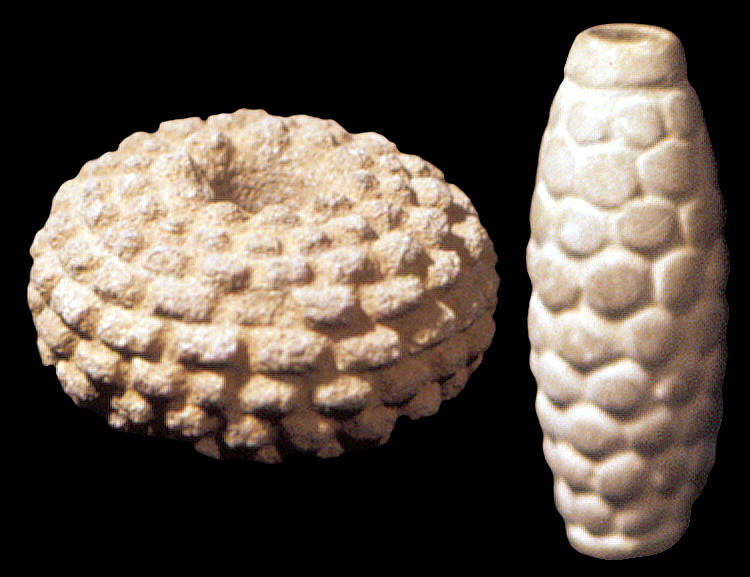|
KNOBBED & MAZE
EFFIGY MACE HEAD
(IMAGE SIZE RATIO COMPARISON IS
NOT ACCURATE)
COSTA RICA, CENTRAL AMERICA
est. A.D. 300 TO 1550
RETURN TO PAGE 1
COPYRIGHT
JULY
31, 2013 PETER A. BOSTROM
Both of these maces were
collected in Costa Rica. The example on the left is a common design. It
was made from a basic round shaped stone that was cut with grooves
to form small knobs or projections over its surface. It's a style that
was used in other parts of the world, in northern Europe and New Guinea.
It appears to be made of limestone and it measures 3 1/2 inches in
diameter.
The mace on the right is unique for the fact that it was made
in the form of a plant rather than an animal. It was carved into a
stylized shape of an ear of corn, also known as maze. Maze was the basic
food crop over a large area of the Americas, just as rice was to Asia
and wheat and barley was to Europe and Egypt. Artistic depictions of
corn by Aztec and Incan craftsmen have helped Botanists study ancient
varieties of this plant. The Incas produced images of corn in stone,
ceramics, textiles, gold and silver. Maze, or corn, did evolve into a
religious object in the Americas. The exceptional length of this mace
might suggest that it was used more as a symbol rather than a weapon.
This mace seems to be made of limestone and it measures 7 1/4 inches
(18.4 cm) long.

|
